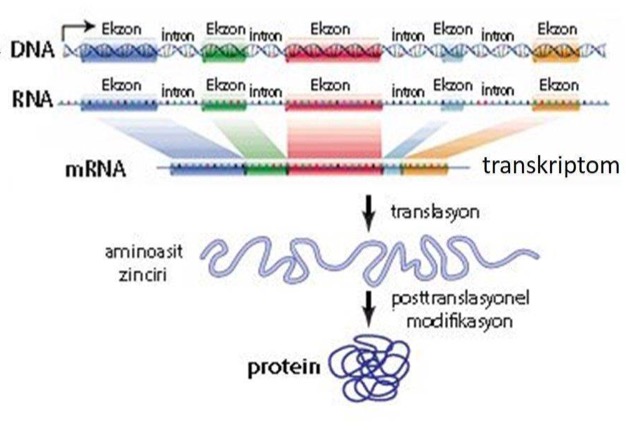
WHOLE EXOME SEQUENCING
All the exons inside the human genome is called exome. Exome includes all the genetic areas in a genome which are actively used in protein synthesis. If we consider the human genome as a book with one million pages, exome constitutes about 10,000 pages (about 1%) of this book.
Whole exome sequencing is one of the most-widely used methods in diagnosis of single gene (Mendelian) diseases. The main reason for that is that about 85% of the nucleotide changes that causes diseases is found inside the exons. In whole exome sequencing, nearly 21,000 genes and 200,000 exons can be sequenced and such power of these methods brings 85% success rate in diagnosis of the diseases.
For many patients the combination of symptoms does not allow suspecting specific genetic causes with a sufficiently high certainty. It is unclear which genes to look at and SNP sequencing and single gene sequencing are not enough to diagnose the diseases. Therefore, WES may be an affordable first test when the clinical spectrum is diverse and diagnostic answers are likely to be obtained only through sequencing the complete coding region, i.e. the whole exome.
Clinical information is very important for the success of WES. The more detailed clinical information is provided, the easier it is to find the relevant gene mutation among thousands of genes which also requires a very comphrenesive mutation database.
WES is similar to searching for an address in a city like WGS. The prepared clinical information serves as a navigation tool for address searching, and a comprehensive database and library is like our vehicle. As if our vehicle is top model and our navigation tool is more qualified and detailed, it is easier and sooner to find the address in the streets of the city. In WES only the mutations in the known genes are analysed, in other words only the houses with numbers (Coding regions) are searched in the city, ruined houses which we call ‘’deletions’’, or unlawful houses which we called ‘’insertions’’, or the dead-end streets which we can call CNV’s (Copy Number Variations / (if it is not included in the test)) are not searched. Due that, the success rate to diagnose a disease is approximately 85%.
WES is usually applied or advised in the case of patients have clinical and genetical heterogeneity, in other words where the mutations in various genes show the same clinical feature like neuropathies, epilepsy and mental disorders, muscle disorders, ataxies, cardiomyopathies, immunodeficiencies, skin disorders or atypical phenotypes or the combination of the symptoms that do not make differentiation to diagnose the diseases. If WES could not succeed to diagnose the diseases, WGS (Whole Genome Sequencing) is advised or applied which has a success rate of 99% .
In our center, CentoXome is applied as WHOLE EXOME SEQUENCING (WES) test. CentoXome analysis is examined in the German CENTOGENE’s laboratory, one of the leading laboratories in Europe and the World in rare diseases which enhances state of the art NGS technology with expert filtering and interpretation of the data with the world’s largest mutation data base called CentoMD.
Patients who consults our center for WES; a detailed clinical information gathered, previous test results are examined, a detailed pedigree (family tree) is drawn and general information is given regarding the genetic tests and a patient consent form is signed by the patient and the doctor. Afterwards blood samples are taken and spotted on special cards and all the information is entered to CENTOPORTAL system. The samples are shipped to Germany on the same day with special cards and the results are obtained in about 1,5-2 months.
After the test results are obtained, genetic counselling is given to patients with detailed interpretation of the results. In addition, after discussing the clinical and molecular aspects of the patient with his/her doctor, the diagnosis of the individual becomes clearer and the treatment method is more clearly determined by the physician.
For detailed information and appointment please contact with us…
